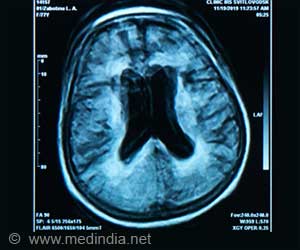Measuring muscle function as part of dementia screening is useful in identifying high-risk individuals who might benefit from primary prevention programs.

‘Older women with the weakest grip strength were 2.5 times more likely to have a late-life dementia event than the strongest individuals.’





Late-life dementias are those that occur after the age of 80 years, often characterized by a set of pathological processes that affect the size of the cortex and hippocampus. This form of dementia can be influenced by positive or negative consequences of environmental exposures (e.g. physical activity or obesity).As such, populations at high risk for developing late-life dementia must be identified during this asymptomatic prodromal period for early inclusion into primary prevention strategies. Till now, no study has examined the relationship between muscle function and late-life dementia.
Is Muscle Weakness a Symptom of Dementia?
To investigate the relationship between muscle function and dementia, the research teams used data from the Perth Longitudinal Study of Ageing in Women to examine more than 1000 women with an average age of 75.Researchers measured the women’s grip strength and the time it took for them to rise from a chair, walk three meters, turn around, and sit back down — known as a timed-up-and-go (TUG), test. These tests were repeated after five years to monitor any loss of performance.
Over the next 15 years, almost 17 percent of women involved in the study were found to have had a dementia event, categorized as a dementia-related hospitalization or death.
The team found lower grip strength and slower TUG were significant risk factors for presenting with dementia, independent of genetic risk and lifestyle factors such as smoking, alcohol intake, and physical activity levels.
Identifying Dementia Risk with Grip Strength
A similar relationship emerged between TUG performance and dementia, with the slowest in their TUG test more than twice as likely to experience dementia than the quickest. When researchers looked at the changes in grip strength and TUG test results after five years, a decrease in performance was also linked with greater dementia risk.Advertisement
Women with the biggest drop in TUG performance were found to be over four times more likely to have a dementia-related death than the fastest.
Incorporating muscle function tests as part of dementia screening could be useful to identify high-risk individuals, who might then benefit from primary prevention programs aimed at preventing the onset of the condition such as a healthy diet and a physically active lifestyle.
The exciting findings were that decline in these measures was associated with substantially higher risk, suggesting that if we can halt this decline, researchers may be able to prevent late-life dementias. However, further research is needed in this area.
Source-Eurekalert















